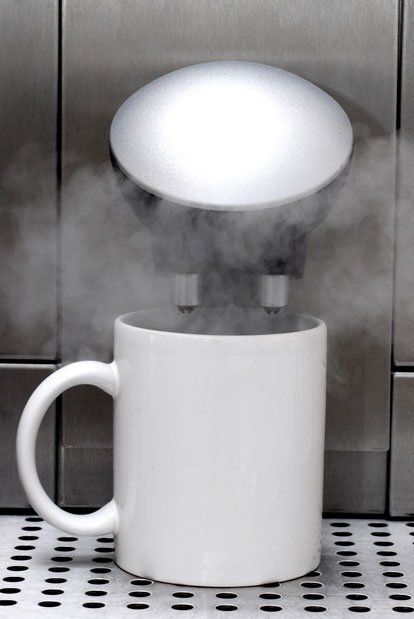
Ron Reid, Partner, Shoosmiths

A client of ours was served with a Health and Safety Improvement Notice after failing to provide its local council with a written scheme of examination and examination reports concerning a coffee machine.
This was held to be a breach of the Pressure Systems Safety Regulations 2000, the main regulations governing the duties and obligations concerning pressure equipment and systems.
The request for the written scheme and report was made following an initiative to ensure the safety of workplace pressure systems following a serious failing of a steam-producing coffee machine, in Hampshire.
Although the notice was subsequently withdrawn, the case highlights the importance of pressure system safety and the risks of non-compliance.
Pressure systems safety
If pressure equipment fails to operate correctly it can seriously injure or kill people nearby, and severely damage property.
Accordingly, the regulations impose a duty on employers to provide a safe workplace and work equipment.
What equipment is covered by the regulations?
Examples of pressure systems and equipment are:
-
boilers and steam heating systems
-
pressurised process plant and piping
-
compressed air systems (fixed and portable)
-
pressure cookers, autoclaves and retorts
-
pressure gauges and level indicators
-
coffee machines that produce steam under pressure
What are the main causes of incidents?
-
poor equipment and system design
-
poor maintenance of equipment
-
an unsafe system of work
-
operator error, poor training/supervision
-
poor installation
-
inadequate repairs or modifications
Written schemes of examination
Owners and users of pressure systems must demonstrate that they know the safe operating limits of their systems. This is done by producing a written scheme of examination in accordance with Regulations 8 and 9.
A written scheme of examination contains information about selected items of plant or equipment which form a pressure system, operate under pressure and contain a ‘relevant fluid’.
The scheme enables a periodic and systematic inspection of the main safety hazards of the specific equipment; it is a maintenance handbook for the system concerned.
The term ‘relevant fluid’ covers compressed or liquefied gas, including air, at a pressure greater than 0.5 bar (approximately 7psi) above atmospheric pressure; pressurised hot water above 110°C; and steam at any pressure.
A written scheme of examination should include:
-
identification of the items of plant or equipment within the system
-
those parts of the system which are to be examined
-
the nature of the examination required, including the inspection and testing to be carried out on any protective devices
-
the preparatory work needed for the item to be examined safely
-
where appropriate, the nature of any examination needed before the system is first used; the maximum interval between examinations
-
the critical parts of the system which, if modified or repaired, should be examined by a competent person before the system is used again
-
the name of the competent person certifying the written scheme of examination
-
and the date of certification.
Importantly, a written scheme of examination is like a car’s MOT: a statutory examination designed to ensure your pressure system is ‘roadworthy’. It is not a substitute for regular and routine maintenance.
Exceptions: Lease/hire equipment
The regulations apply to mobile systems capable of being transported between sites or premises.
Although the primary responsibility for compliance lies with the user, where a pressure system is leased or hired, it is possible for the supplier to be responsible for discharging these duties. In such situations it is essential that the user has an agreement confirmed in writing from the supplier.
For mobile systems, the owner must provide the user with a written statement detailing the safe operating limits, or ensure that this information is clearly marked on the equipment. Where the system is likely to be hired for long periods, both a written statement and durable marking are preferable. This should ensure that safety information is always readily available.
The written scheme of examination must be ‘suitable’ throughout the lifetime of the plant or equipment, so it should be reviewed and, when necessary, revised.
Further information
For further guidance, please contact a member of our Regulatory and Compliance team.
Further information from the HSE can be found at www.hse.gov.uk/pressure-systems
This article originally appeared on the Shoosmiths blog.
The Safety Conversation Podcast: Listen now!
The Safety Conversation with SHP (previously the Safety and Health Podcast) aims to bring you the latest news, insights and legislation updates in the form of interviews, discussions and panel debates from leading figures within the profession.
Find us on Apple Podcasts, Spotify and Google Podcasts, subscribe and join the conversation today!




PSSR